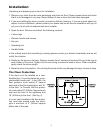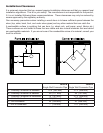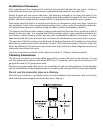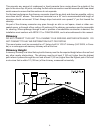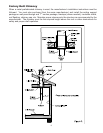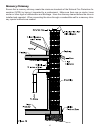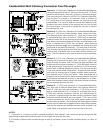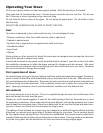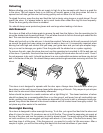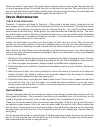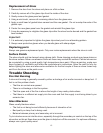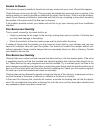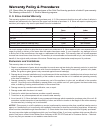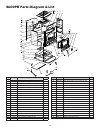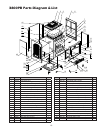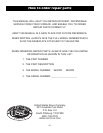14
When you return to your stove, fully open both air controls until you have a good re and then set
to normal operating levels. Do not add fuel until the re bed is hot and red. Then add a little for the
rst time and allow that to ignite before adding more. During overnight burning, the stove glass will
blacken, but when a hot re is established again this should burn off.
Stove Maintenance
CHECK STOVE REGULARLY
Creosote – Formation and Need for Removal – When wood is burned slowly, it produces tar and
other organic vapors, which combine with expelled moisture to form creosote. The creosote vapors
condense in the relatively cool chimney ue of a slow-burning re. As a result, creosote residue
accumulates on the ue lining. When ignited, this creosote makes an extremely hot re. The chim-
ney and chimney connector should be inspected at least once every two months during the heating
season to determine if a creosote buildup has occurred. If creosote has accumulated, it should be
removed to reduce the risk of a chimney re.
Initially, we recommend you check your ue system at least once per month. After the rst few
months you will notice a pattern of soot and creosote build up and you can then determine an in-
spection interval for checking soot and creosote build up that is suitable for your stove installation.
Other checks, as listed below, should be carried out at least twice per year. If you notice anything
wrong at any time it should be repaired immediately. Never use a stove that is in any way damaged
or has a damaged ue.
1. Check your ue system for build up of soot or creosote and for signs of damage to joints. To check
ue outlet remove top of bafe by lifting and pulling out at end. Use a ashlight to check ue out-
let. Clean and repair as necessary. Always replace top bafe before relighting stove.
2. Check that glass is not cracked or chipped and that sealing rope is in good condition. Replace as
necessary.
3. When the room is dark, use a strong ashlight to check the sealing of the stove at the edge and
corners for leaks. Any leaks or cracks found should be repaired with re cement or damaged
parts should be replaced with genuine spare parts.
4. Check that stove door is tight and well sealed when closed. Place a strip of paper into the stove
and close the door, try to pull out paper. You should feel some resistance to your pull, check
several points around the door. If it pulls out too easily, replace the rope and seal in place with a
suitable high temperature sealant.
Care of Glass
At times, especially when the air controls are turned to low settings or when damp wood is used, the
stove glass will blacken. This is caused by fuel that is not completely burnt, but the build-up on the
inside of the glass will normally burn off when a good hot re is established in the stove.
There may be times however when you need to clean the glass. To do this, use a soft cloth and a
non-abrasive glass cleaner. Only ever clean the glass when the stove is cold. When loading fuel
into the stove, always make sure it is not protruding out through the door opening, as this may break
the glass when you close the door. This is especially relevant when loading logs. Always close the
door gently.
Do not operate with broken or cracked glass. If the glass does crack when the stove is lit, let the re
die out. Do not open the door until the stove has fully cooled. Replace the glass only with the speci-
ed replacement part before re-using the stove.



